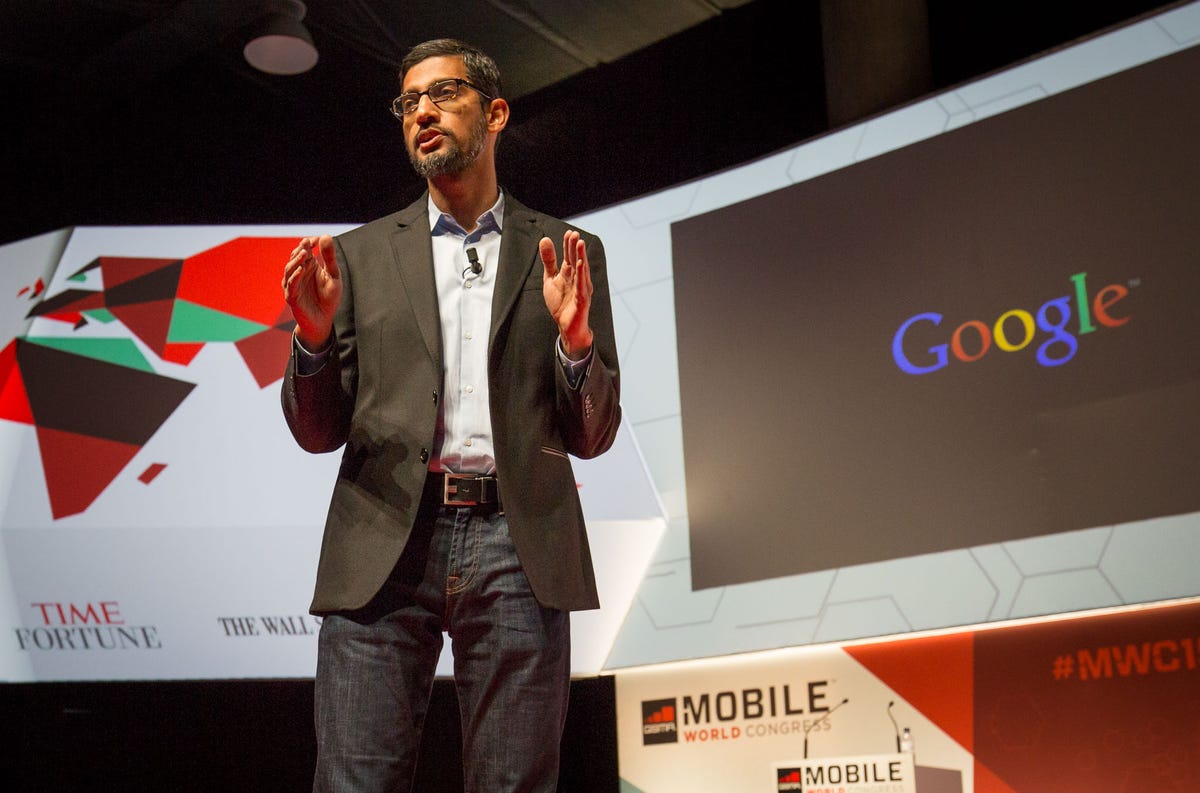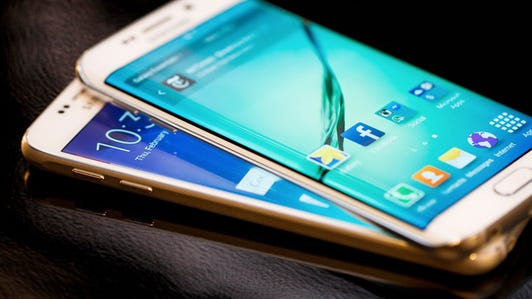
Stephen Shankland/CNET
BARCELONA — Google will launch a wireless service of its own, but it may be a limited project.
Sundar Pichai, senior vice president of products for Google, confirmed that the world’s largest search company was in talks with wireless carriers, and suggested an answer would arrive “in the coming months.” He was addressing the speculation that Google would partner with the carriers to offer a hybrid service that would rely on cellular and Wi-Fi networks.
A spokesman later clarified that an announcement would come in the next few months, not that a service would be launching.
Pichai was quick to note that he would approach any service the same way that he approaches the Nexus program. He doesn’t see Nexus as a competitor to his vendor partners — rather, it’s a way for Google to drive innovation across hardware and software through a limited roll out. He views wireless service the same way.
“We don’t intend to be a network operator at scale,” Pichai said in a keynote address at the Mobile World Congress trade show. “We are working with carrier partners. You’ll see our answer in coming months. Our goal is to drive a set of innovations we think should arrive, but do it a smaller scale, like Nexus devices, so people will see what we’re doing.”
Take a tour of the phones at Mobile World Congress 2015






The Nexus line of mobile devices has been Google’s attempt to foster a “pure” Android experience, in which for a given device a hardware maker such as HTC or Motorola is forbidden from making tweaks to the user interface atop the Android operating system, from altering the underlying software or from preloading custom apps. The community of Android devices outside that Nexus experience has been notorious for its lack of consistency, in contrast with the uniformity presented by Apple’s iOS.
Any Google wireless service, however, could potentially shake up the US wireless industry. The company’s Google Fiber project, which provides superfast Internet service to customers in select markets, has already forced the traditional telecom and cable companies to increase speeds and cut costs. The service falls in step with Google’s broader mission of connecting more people, or new eyeballs for its ad business.
“I’d hope Google experiments with additional service models besides the default carrier plans where the user – either prepaid or postpaid – has to buy a set service allotment every month,” said Gartner analyst Bill Menezes.
Google is rumored to be working with Sprint and T-Mobile to create a cellular service, which would also be aided by local Wi-Fi networks to augment coverage. Other wireless resellers such as Republic Wireless already employ the same kind of mobile, although they offer limited smartphone selection and availability.
T-Mobile and Sprint spokesmen weren’t immediately available to comment.
Taking to the sky
While a traditional wireless service may work in the US, Google is working on building a backbone for connectivity in regions of the world where there’s no existing infrastructure. Google already has Project Loon, which employs balloons that lift cellular radios in the air to augment coverage on the ground in remote and rural areas.
After two years, the balloons can now keep cellular radios in the air for as long as 200 days, Pichai said.
But Pichai also brought up the next phase, Project Titan, which would take lightweight drone aircraft outfitted with cellular radios to further augment coverage. He said that the drones could be deployed quickly to an area in need of extra capacity, like a disaster zone. The company is taking its first steps now to fly the planes.
The company envisions a mesh network stitched together by drones and balloons to bring the Internet to regions that have no other options.
In addition to connectivity, Google has been aggressive in driving down the prices of its partners’ products through its Android One program. Today, smartphones that most people would be happy using can be purchased for $100. But, Pichai said, “that could be done at $50 two years from now,” something that would bring smartphones to a market of 1.7 billion people.
“We are well on our way to a platform by the end of the decade will touch 4 to 5 billion people,” he said. “They will have a very powerful computer in their hands.”
Updated at 7:14 a.m. PT: Added comment from a Google spokesman.
CNET’s Stephen Shankland contributed to this report.



